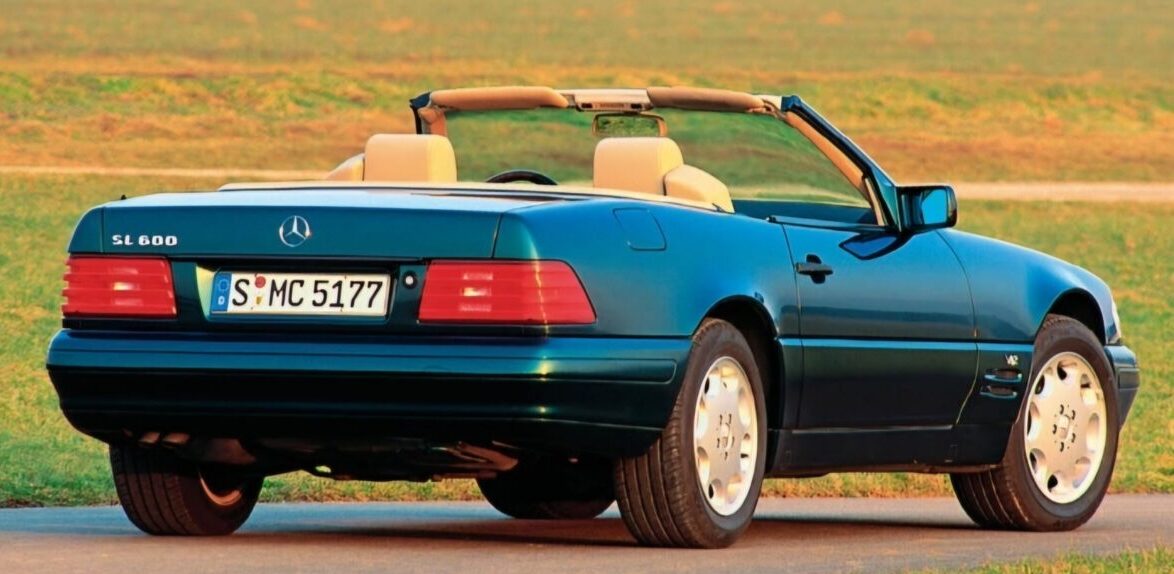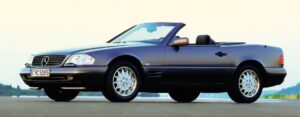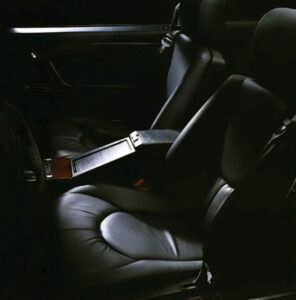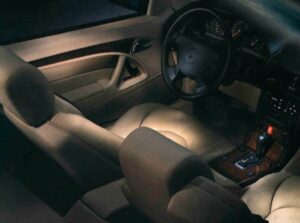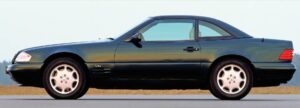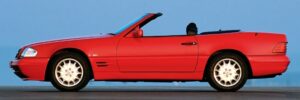Mercedes R129 SL: The 1995 facelift that redefined an icon
1. A turning point in SL history
2. Sharper styling for a sportier image
4. Engineering enhancements under the skin
6. Conclusion
A turning point in SL history
By the mid-1990s, the Mercedes-Benz R129 SL had already established itself as an icon of sophistication and engineering excellence. Yet, at the 56th Frankfurt Motor Show in September 1995, Mercedes unveiled the model’s first official facelift—ushering in a new chapter for the celebrated roadster. While chassis codes remained largely unchanged and only one engine received a new designation, the facelift marked a significant milestone in the R129’s evolution.
Sharper styling for a sportier image
The facelifted SL retained the elegance of its predecessor but introduced a sportier, more dynamic character. The most visible change was the redesigned front bumper, now deeper and sleeker, with a lower air dam and a wraparound insert at number plate level. This modification subtly increased the car’s overall length to 4499 mm, while enhancing its presence on the road.
Above the bumper, the grille was refined from seven to six slats, widening the spacing for a bolder appearance. Optional Xenon headlights debuted, delivering twice the brightness of halogen units and paired with an automatic leveling system to prevent glare. Depending on the market, clear indicators and side repeaters became available, with the U.S. retaining its earlier lighting setup.
The side profile saw equally thoughtful refinements. The body cladding was smoothed, color-keyed, and dropped slightly to create a more harmonious character line. Front wing vents shifted from three square slots to two rounded openings, while side skirts deepened to match the updated front air dam. Even the mirrors were subtly reshaped for a softer profile.
At the rear, the SL adopted a cleaner look with a softened bumper, sharper bi-chromatic taillights, and an optional integrated third brake light. The introduction of the Panorama Roof—a tinted, heat-reflecting glass hardtop with a roller blind—added an elegant, futuristic option, first offered in Germany before reaching the U.S. market in 1997.
A refreshed interior
Inside, the facelift brought both comfort and modernity. New seats with rounded edges replaced the more severe earlier designs, while fresh door panels with polished walnut veneer inlays introduced a warmer ambiance. Crucially, side airbags became standard from 1996, reflecting Mercedes’ commitment to safety.
The steering wheel was updated too: a sportier four-spoke design for six- and eight-cylinder models, and a luxurious leather-and-wood wheel for the V12-powered SL600. In the U.S., the center console was revised to accommodate cupholders, moving the ashtray and lighter to a storage compartment below the central switches.
Engineering enhancements under the skin
The facelift was not just cosmetic. Mercedes introduced significant mechanical updates, particularly for the V8 and V12 models. The 5.0-liter V8 (now coded M119.982) gained lighter pistons, a revised valve system, a new crankshaft, and individual ignition coils, all managed by the latest Bosch ME 1.0 system. The 6.0-liter V12 also adopted the updated electronics and ignition setup.
Perhaps the most transformative upgrade was the new electronically controlled five-speed automatic transmission (722.6). Compact and refined, it offered smoother gear changes, improved fuel efficiency, and a lock-up clutch on the upper three gears. This transmission contributed to a 7% reduction in fuel consumption and a 40% drop in emissions, ensuring compliance with Europe’s stricter EURO 2 standards and reducing the U.S. Gas Guzzler Tax.
For drivers, the old “S” and “E” mode selector was replaced with an “S” (Standard) and “W” (Winter) switch, the latter enabling smoother starts in slippery conditions. The gearbox also communicated with the ECU, momentarily reducing torque during shifts for seamless acceleration.
Safety and technology
The facelifted SL introduced another breakthrough: ESP (Electronic Stability Program). Standard on the SL600 and optional on the SL500, ESP monitored ABS sensors to detect understeer or oversteer and corrected the car’s path by reducing engine torque or applying individual brakes. For purists, it could be disabled via a dashboard switch.
Conclusion
Though the 1995 facelift did not reinvent the R129, it represented a carefully considered evolution. By refining styling, elevating interior luxury, introducing groundbreaking safety systems, and modernizing drivetrain technology, Mercedes-Benz ensured the SL remained ahead of its competitors.
For enthusiasts today, the facelifted R129s (produced between late 1995 and mid-1998) are especially desirable, offering the perfect blend of classic SL charm and modern usability. They stand as proof that sometimes, the best transformations are those that work quietly—enhancing an icon without ever losing its soul.
Are you already a proud owner of a Mercedes R129? If so, check out our selection of parts for this car at the following link:
https://octoclassic.com/product-category/mercedes-benz/r129






